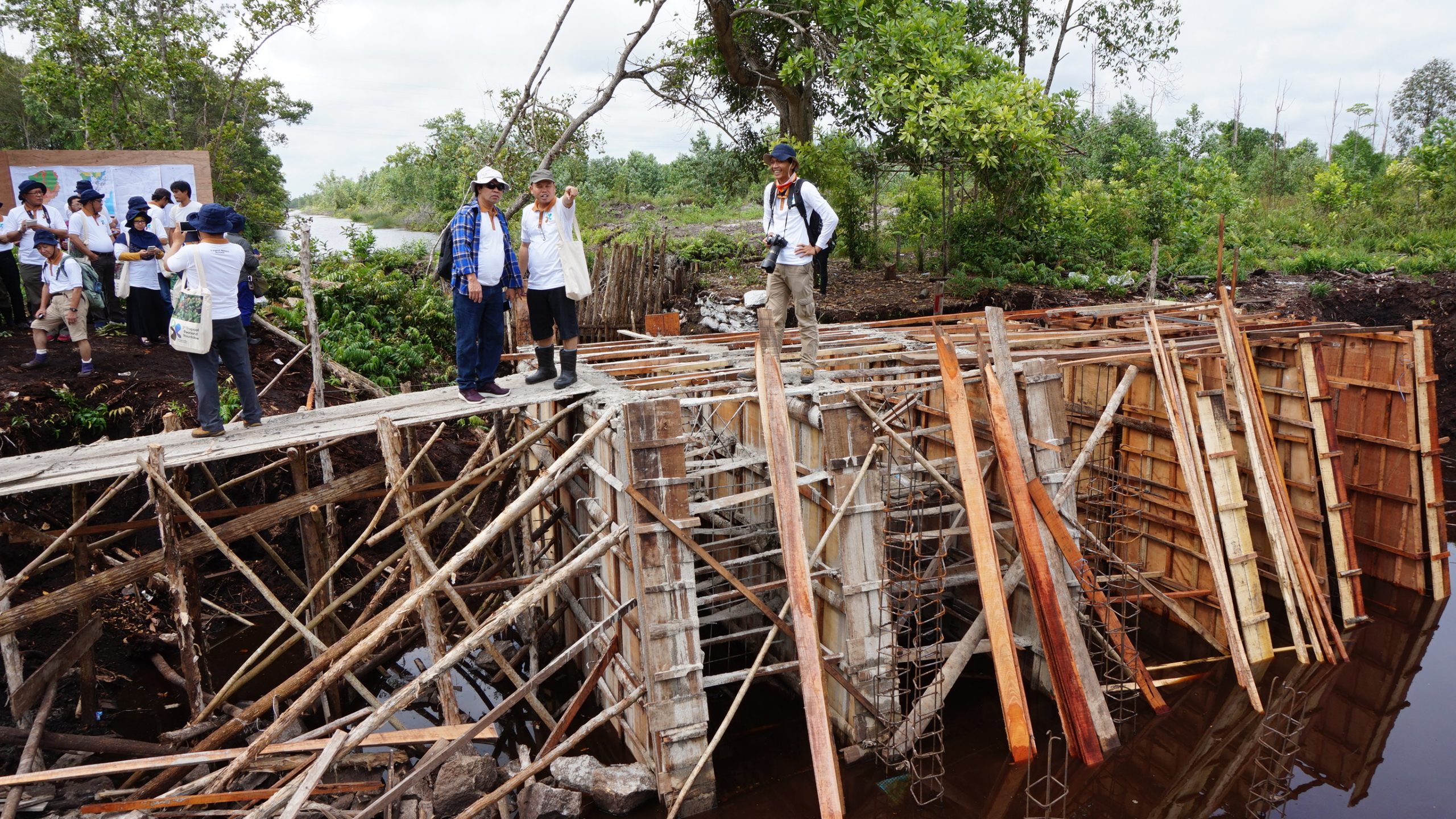Peatland Restoration is a term used to describe management measures that aim to restore the original form and function of peatland habitats to favourable conservation status.
The principal activity involved in restoration is management of site hydrology which in turn helps to control emissions of greenhouse gases such as carbon dioxide. Depending on the starting point, peatland sites may need drain blocking to rewet them using a variety of techniques including peat dams, plastic piling and bunding, plantation removal, pollution control, Sphagnum transfer and/or control of grazing, burning, water quantity and quality.
Traditionally restoration objectives are set out in a management plan for a site with a timetable for its implementation and a means of monitoring its effectiveness.

Peatlands are vulnerable ecosystems in a wider landscape. Different types of management can result in different outcomes. For example grazing and burning may play a positive role in the long term management of peatlands that are conserved for nature. Drainage and peat cutting can however have a significant impact on peatlands and lead to irreversible degradation of the peatland site.
In both scenarios there may be a requirement for restoration but to varying degrees. In general, the greater the impact of any ‘economic use’ on a pristine peatland, the greater the input required to restore and/or rehabilitate the peatland to its original state. If a peatland has been changed beyond the point of restoration, it may be considered either to return some functional aspect of a peatland (water regulation, carbon sequestration) and/or it may be considered for an alternative after-use such as forestry, biomass and/or agricultural use.
However, restoration should always be the first priority in selecting a post-economic use management option as peatlands are important ecosystems for biodiversity in temperate regions and contribute significantly to the global carbon cycle in the boreal regions.
There has been considerable work carried out to date on the restoration of peatlands where degradation can be reversed, as well as rehabilitation and rewetting where some of the functional aspects of peatlands can be restored. There is also an increasing body of work illustrating that investing in restoration of peatlands can help restore natural capital and its ecosystem goods and services.
